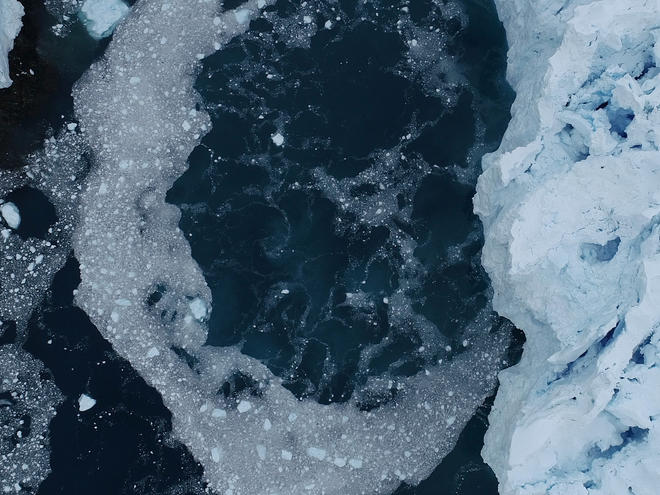

Antarctica is epic—one of Earth’s last truly wild places. And new technology is teaching us more than ever before about one of the continent’s most enchanting creatures: whales.
WWF and our partners at Duke University Marine Robotics and Remote Sensing Lab (MaRRS), Friedlaender Lab, and California Ocean Alliance are using drone photography and digital tags to better understand how and where whales in Antarctica feed, the health of their population, and how climate change is affecting them.
The Antarctic Peninsula is a crucial spot for humpback and minke whales to feed on krill—the keystone species of the Antarctic food web. Despite its minuscule size, krill feeds far larger animals, such as penguins, seals, seabirds, and fish. An ocean current flowing clockwise around the content and north up the Western Peninsula brings swarms of these critters.
However, as oceans warm and sea ice declines, krill is on the move toward lower latitudes—farther south—requiring whales to travel longer distances to feed. Unfortunately, krill fishing is concentrated in this area and overlaps with crucial feeding areas for whales and other krill-dependent species.
As climate change is impacting the region, any increased competition with a growing fishery means we need to ensure that krill is harvested responsibly in this fragile habitat.
Drones and digital tags are helping us to better track and study humpback whales—how they eat, whether they’re healthy, and how climate change impacts their lives. We’re understanding more about the distribution and habitats of other krill-dependent species with these tools, too. Seals and penguins need those tiny critters to survive and share the same resting and breeding habitats. Artificial intelligence and machine learning techniques are used in processing drone images to count local populations. They're a game-changing technology.
Collaboration is the spirit of Antarctic science and it’s the most effective way to make an impact. Across WWF, we work with a range of research teams including University of California Santa Cruz, California Ocean Alliance, Duke University, British Antarctic Survey, Australian Antarctic Division and other partners such as tourism operators like One Ocean Expeditions working side-by-side in the field while sharing the science in action as it happens.
The good news is governments have already committed to the creation of a network of Marine Protected Areas, an important piece of WWF’s goal to protect 30% of the Antarctic Peninsula by 2030. These Marine sanctuaries help build resilience to climate impacts and acts as an insurance policy for nature. These new technologies and innovative data allow us to make sure we can safeguard Antarctic wildlife for years to come, while we work to bring down global emissions that are causing Antarctica to warm, learn how you can reduce your carbon footprint. These new technologies and innovative data allow us to make sure we can safeguard Antarctic wildlife for years to come.
Imagery in this story collected under research permits: ACA #2015-011, #2016-024 & #2017-034; NMFS #14809; US NSF #1440435 & 1643877.
Published May 21, 2019 at 05:00AM
No comments:
Post a Comment